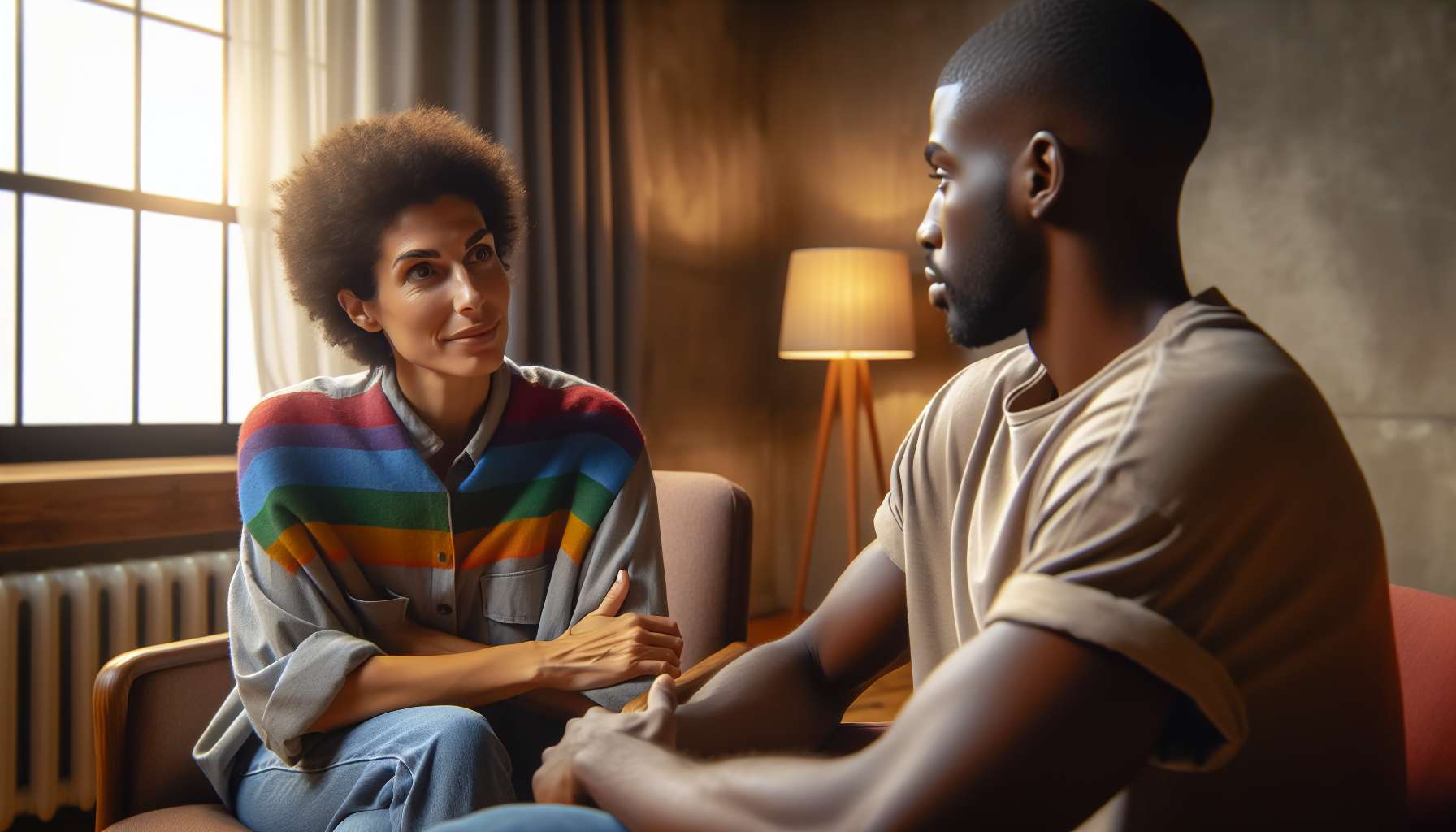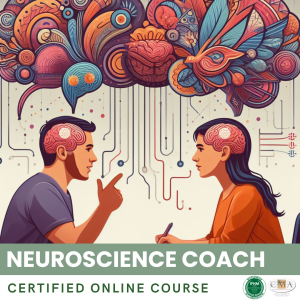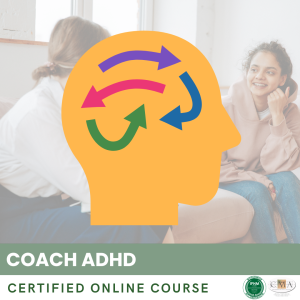Non-verbal communication is an essential aspect of conducting a coaching interview, particularly with LGBTQ+ individuals. Beyond words, an entire body language plays out in the interaction, made up of gestures, expressions, postures, and gazes. Paying attention to these subtle signals allows the coach to better understand the person, to adjust to them and to build a trust relationship.
Non-verbal communication is often more spontaneous and less controlled than verbal language. It can express emotions, attitudes, tensions that are not verbalized. For example, a person talking about their trans-identity with a tight smile and trembling hands reveals anxiety that can be explored. The coach must be attentive to these incongruent signals between the verbal and the non-verbal.
Eye contact is a key element of non-verbal communication. A kind, warm and present gaze helps establish an authentic connection. Conversely, an evasive, distant or probing gaze can cause discomfort. The coach should offer a welcoming and non-judgmental gaze, while respecting the moments when the person needs to look away to think or contain their emotions.
The coach’s posture and gestures are also important. An open, relaxed posture pointed towards the person demonstrates availability and interest. Calm and gentle gestures are soothing, whereas abrupt gestures or a stiff posture can be off-putting. The coach can subtly mirror the person’s posture to create synchronicity.
Touch is a delicate issue to handle with caution. While a hand on the shoulder or arm can sometimes show support, any non-consensual contact must be avoided. This is particularly true for LGBTQ+ individuals who may have experienced violence or boundary crossings. The coach must in any case respect everyone’s physical boundaries.
Voice is a powerful non-verbal marker. Beyond words, it is the tone, volume, pace, and silences that create an atmosphere. A soft and calm voice soothes, a warm and dynamic voice stimulates, a deep and slow voice encourages introspection. The coach must know how to modulate their voice according to the moment and the desired effect.
Silence is an eloquent non-verbal. Far from being empty, it is a breathing and maturation space for thought. The coach should be comfortable with silences, without trying to systematically fill them. Often, these interstices are where realizations occur. For LGBTQ+ individuals who may have internalized the injunction to hide their identity, offering benevolent silence is valuable.
The coach should also be aware of his own non-verbal communication in a reflective posture. His body language expresses his congruence and authenticity. If there is a gap between what he says and what he shows, it creates a dissonance which harms the trust relationship. A coach who claims to be open-minded but demonstrates closed or uncomfortable non-verbal signals concerning certain LGBTQ+ topics will send a detrimental double message.
Finally, non-verbal communication is an interactive dance played out by two parties. The coach must continually adjust to the individual’s non-verbal signals in a subtle tuning. If the person is fast-paced and keeps a forward posture, the coach can match this rhythm. If they withdraw and speak softly, the coach can slow down and soften their communication. This relational tango is what allows the building of a working alliance.
Concretely, the coach can use non-verbal communication as a coaching lever. They can point out a change in posture and explore it: “I see that you straighten up in your chair when talking about this project, what does that make you feel?“. They can mirror a perceived emotion: “Your voice trembles when talking about your coming-out, I sense it’s a sensitive topic for you.“. They can also propose non-verbal role-playing to experiment with new postures.
For LGBTQ+ individuals whose identity is often invisibilized or oppressed, being welcomed in all their non-verbal expressions is liberating. Being able to sigh, laugh, cry, remain silent, without fear of being judged, is a powerful self-acceptance factor. The coach, through their own benevolent and adjusted non-verbal communication, helps create this emotional safety space suitable for self-unfolding.
In summary, non-verbal communication is a subtle art at the core of the coaching relationship. Gazes, gestures, postures, silences… so many valuable signals to understand the person in all their dimensions. For LGBTQ+ individuals whose bodies and identities have often been the site of wounds, offering quality non-verbal presence is a healing balm. By being attentive, adjusted and in sync with the person, the coach creates conditions for an authentic encounter where the entire identity can be expressed and thrive, beyond words.
Takeaways:
– Non-verbal communication is essential in coaching, especially with LGBTQ+ individuals. It comprises gestures, expressions, postures, and gazes, and helps better understand the person.
– Non-verbal signals are often more spontaneous, less controlled than verbal ones. They can express unverbalized emotions and attitudes. The coach must be attentive to the incongruent signs between verbal and non-verbal.
– The coach’s kind, warm and non-judgmental gaze crucially helps to create an authentic connection, respecting moments when the person needs to look away.
– The coach’s open, relaxed posture and calm gestures show their availability. They can subtly mirror the person’s posture to create synchronicity.
– Touch is sensitive and must be used cautiously, respecting the physical boundaries, especially for LGBTQ+ individuals who may have experienced violence.
– The coach’s voice (tone, volume, pace, silences) helps create an atmosphere and can be adjusted to the moment and the desired effect.
– Silences are valuable breathing and maturation spaces not to be systematically filled. They are important for LGBTQ+ individuals who have internalized the silence of their identity.
– The coach must be congruent between their verbal and non-verbal to be authentic and avoid sending a double message.
– Non-verbal communication is interactive where the coach constantly adjusts to the person’s non-verbal in a subtle adjustment.
– The coach can use non-verbal signals as coaching levers by pointing them out, reflecting an emotion, or through role-playing.
– For LGBTQ+ individuals, non-judgmental acceptance of their non-verbal signals is liberating and facilitates self-acceptance. The coach’s benevolent non-verbal communication contributes to creating an emotional safety space.
👉 To download docx (Editable) file click here : Click here
👉 To download PDF file click here : Click here
👉 To download MP3 file click here : Click here







